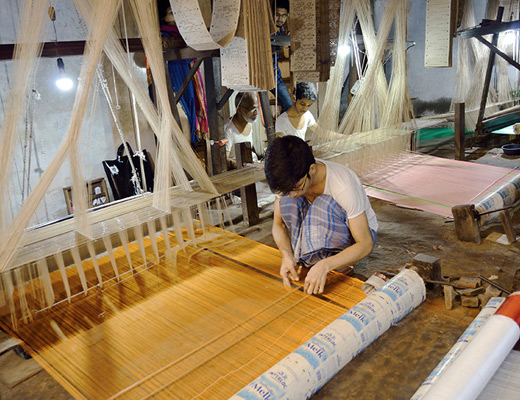The main processes to which silk is subjected are:
- The production of the cocoon: The cocoon is the product of the silkworm, an insect that produces a very resistant silk thread. The cocoon is collected from the silkworms and then taken to an oil mill.
- Dissolving the cocoon: The cocoon is dissolved in hot water to release the silk thread. The silk thread is then wound onto a drum, forming a ball.
- Spinning: The ball of silk thread is spun into yarn. The yarn is then wound onto a drum, forming a roll.
- Twisting: Silk yarn can be twisted to increase its strength and resistance.
- Dyeing: Silk yarn can be dyed into any color. The dye is applied to the yarn in a dye bath.
- Weaving: The silk yarn is then woven into a fabric. Silk fabric can be used to create a variety of products, including clothing, linens, rugs and furnishings.
Here is a more detailed description of each of these processes:
Cocoon production
Silkworms are raised in warm, humid greenhouses. Silkworms feed on mulberry leaves and produce a cocoon every time they transform into a butterfly. The cocoons are collected from the silkworms and taken to an oil mill.
The unraveling of the cocoon
The cocoons are dissolved in hot water to release the silk thread. The silk thread is then wound onto a drum, forming a ball.
Spinning
The ball of silk thread is spun into yarn. The yarn is then wound onto a drum, forming a roll.
Twisting
Silk yarn can be twisted to increase its strength and durability. The silk thread is twisted into two strands, which are then twisted together to form one twisted thread.
Dyeing
Silk yarn can be dyed into any color. The dye is applied to the yarn in a dye bath. Silk dyes are designed to adhere to silk fibers without damaging them. Silk dyes can be applied to silk yarn in several ways, including:
- Dip dyeing: The silk yarn is immersed in a hot dye bath.
- Stitch dyeing: Silk yarn is dipped into a dye bath, but only in certain areas, to create a pattern or design.
- Machine Dyeing: Silk yarn is loaded into a dyeing machine, which applies color evenly.
Weaving
The silk yarn is then woven into a fabric. Silk fabric can be used to create a variety of products, including clothing, linens, rugs and furnishings.
Silk processing is a complex process that requires a lot of labor. The different steps of silk processing must be performed precisely to ensure that the final product is of high quality.
